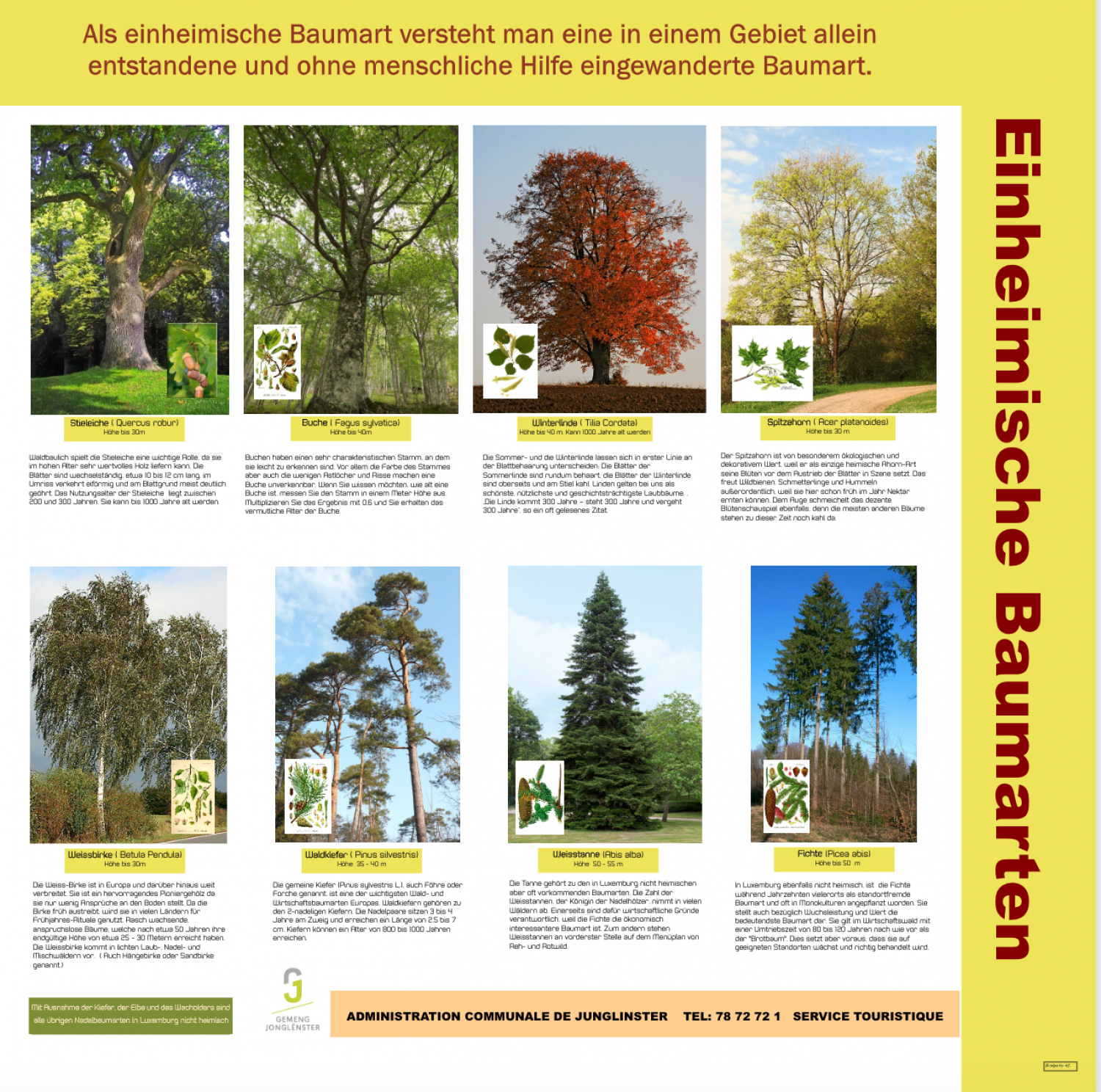Indigenous Trees

Indigenous trees include species of tree which arose on their own in the region or which traveled here without human intervention. European Oak (Quercus robur) Height up to 30 m In terms of forest management, the European Oak plays an important role because, in advanced age, it can provide valuable wood. The leaves alternate, are around 10 to 12 cm long, are shaped like an upside down egg and are typically basal auriculate. The useful age of the European oak is between 200 and 300 years. They can grow to be 1000 years old. European Beech (Fagus sylvatica) Height up to 40 m Beeches have a characteristic, easily recognizable trunk. The color above all, but also the small number of branch holes and cracks make the beech unmistakable. If you would like to know old a beech is, measure the trunk at a height of one meter. Multiply the result by 0.6 and you will find the estimated age of the beech. Small-leaved Linden (tilia cordata) Height up to 40 m Can live up to 1000 years The large and small-leaved linden are primarily distinguished by the hairs on the leaves: the leaves of the small-leaved linden are bare on the tops of the leaves and on the stem. Lindens are some of our most beautiful, useful and historical deciduous trees. As the saying goes, “The linden grows 300 years, stands 300 years, and dies 300 years.” Norway Maple (Acer platanoides) Height up to 30 m The Norway maple is of particular ecological and decorative value because it is the only variety of maple which produces flowers prior to its leaves. This is particularly prized by wild bees, butterflies and bubble bees because here they can harvest nectar early in the year. The delicate floral array is also a joy to behold, particularly because most other trees are still bare at this time of year. Silver Birch (Betula pendula) Height up to 30 m The silver birch is widespread throughout Europe and beyond. It makes for excellent primary vegetation because it places few demands on the soil. Because the birch buds early, it is used for spring rituals in many countries. They are fast-growing, low-maintenance trees which have reached their final height of approx. 25-30 m after around 50 years. The silver birch is found in thinly growing deciduous, coniferous and mixed forests. (Also known as the weeping birch or white birch.) European Red Pine (Pinus sylvestris) Height 35-40 m The common pine (Pinus sylvestris L.), also called the Scots or Scotch pine, is one of the most economically important types of trees in Europe. Red pines belong to the family of 2-needle pines. The needle pairs remain on the branch for 3 to 4 years and reach a length of 2.5 to 7 cm. Pines can reach an age of 800 to 1000 years. European Silver Fir (Abies alba) Height 50-55 m The fir is a tree species which is often found in Luxembourg but which is not native. The number of silver firs, the king of coniferous trees, is declining in many forests. There are economical reasons for this, on one hand, because the spruce is the more economically interesting species. On the other hand, firs are also at the top of the menu for roh and red deer. European Spruce (Picea abis) Height up to 50 m Also not native to Luxembourg, the spruce has been planted in many places as a non-native species, often as monoculture. In terms of growth performance and value, it is the most important species of tree. With an active lifespan of 80 to 120 years, in a commercial forest, it continues to be considered the “bread tree”. This requires, however, that it is planted in suitable locations and is treated properly.
Download Flyer (PDF)